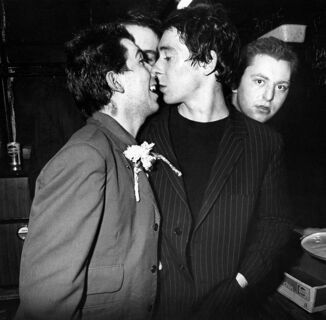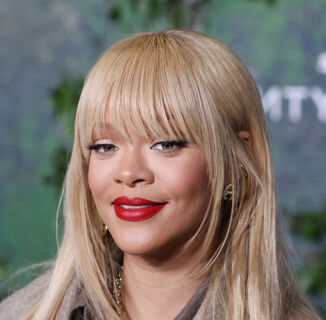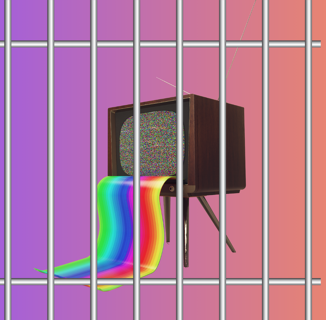During a recent panel discussion at the first ever LGBT Thailand Travel Symposium in Bangkok, INTO heard travel blogger and social media influencer Meg Cale say that “the bar is set so inexplicably low for lesbian travelers, that really, by doing anything at all to cater to queer women, the LGBT travel industry will be raising the bar.”
After the panel, INTO interviewed Cale, who currently runs one of the most popular lesbian travel blogs, Dopes on the Road, with her wife, Lindsay Cale. With over 75k readers and 250,000 clicks (just this year alone), Dopes on the Road is one of the most widely read queer travel blogs. With over six years of travel writing/blogging experience and features in Cosmopolitan, Travel + Leisure, and HuffPost, Meg and Lindsay are some of the most knowledgeable ambassadors for queer women who travel. Their site combines guides like “Summer Packing List for Gender Neutral Clothing” to “40 Safety Tips for LGBT Travelers” as well as top picks for queer women with listicles like “20 Best Lesbian Parties and Lesbian Festivals in the World“.

Your blog, Dopes on the Road is one of the most followed lesbian travel blogs, can you tell me about how it started?
Meg Cale: I started Dopes on the Road when I moved to South Korea for a job in 2013. My first posts were off center grainy photos of me packing to leave for Korea in my girlfriend’s [now wife’s] house. But from the moment I pressed publish on those first heinous posts I was smitten by the world of nomadic entrepreneurship and blogging.
It didn’t take long for me to realize there was very limited information for queer travelers online and started to get questions from folks looking to move to Korea, teach ESL, and travel as queer couples. My background in LGBT advocacy gave me a unique skill set when answering many of these questions. Which is when DotR morphed from personal blog to becoming more professional.
I hoped that DotR would become a space on the internet for LGBT people like me to find resources for travel that felt more familiar to my community. I knew I wanted to inspire others to have adventures in everyday life without sugar-coating the reality of traveling as an LGBT person.
LGBT travelers face a unique set of difficulties when seeing the world. The policies and social acceptance of LGBT people varies widely from country to country, but the reality is that safety is still a huge concern for people when LGBT identity is illegal in 83 countries and territories around the world. It’s my hope to lead by example and inspire other LGBT people to seek out adventures around the world and engage in building community around the world.
Since the blog’s founding, what countries have you lived in and how many countries total have you been to?
We’ve lived in three countries, South Korea, the United States and we’re currently based in Merida, Mexico. I stopped counting countries a while back because it felt silly to me but it’s somewhere in the mid-40s, I believe. I find it silly because I don’t want to view travel as a series of hunting trophies but rather a collection of experiences that helped to shape who I am as a person. Of course, as a blogger, being able to say I’ve been to over 100 countries or I’ve been to all seven continents is a professional accolade but it’s definitely not my driving motivation in what we do.

Having experienced so many different countries and cultures, what are some of the best tips you’ve learned that may be helpful to queer women while traveling?
Queer women, nonbinary people, and transgender folks deal with unique issues that other members of the LGBT umbrella may not understand. Queer women, for example, will always be women, a marginalized group in many areas of the world. They are also queer which makes us doubly at risk for potential issues of discrimination and violence. I don’t say this to scare anyone but rather as a cautionary tale. The compounded risk makes research all the more important.
There are several questions queer women should consider before traveling abroad. The first and harshest: can you pass as straight and cisgender? Being able to pass as straight and cisgender is an incredible privilege when visiting countries that aren’t as friendly to LGBT people. If you can, it may be as easy as refraining from physically touching your partner or outing yourself while traveling. If you can’t – you have to decide what options feel safest.
What are your top three favorite travel destinations/experiences for first time queer female travelers?
This one is so tough but I’d say my top countries are Thailand, Spain, and Canada. They all offer very unique experiences but are some of the most welcoming and affirming countries in the world.
For a very social traveler, what are the best worldwide festivals and gatherings for queer women?
Palm Springs’ Dinah Shore is the biggest lesbian festival in the world and a rite of passage for queer women these days. But it’s far from the only event! I recently published a list of some of my favorite lesbian parties and festivals around the world.

What are your favorite destinations and experiences for more experienced travelers?
Oh so many – I loved Banos, a tiny little town in the cloud forest of Ecuador, because waterfalls are a dime a dozen and adventure sports are a way of life. While you won’t find luxury hotels in Banos, you’ll find a new respect for nature and people with the biggest hearts.
Since you began working on the blog with your wife, Lindsay, can you tell me about some of the troubles you have had around the world while traveling together?
Most of our issues traveling have more to do with Lindsay’s gender expression than our sexuality. Lindsay is 6′ tall and very androgynous. She’s significantly taller than an average man in many countries. She’s masculine but not quite masculine enough to always pass as male. Which brings issues everytime we’re doing a gendered activity which is way more frequently than you can imagine. Anything to do with swimming, locker rooms, changing, bathrooms, security scanners, outfit changes, and required clothing has the potential to become anywhere from annoying to physically dangerous.

How could the travel industry adapt better to accommodate queer women?
I’d love to see gender neutral bathrooms and changing facilities in airports, hotels, and other public tourism venues. Somedays while we’re on the road Lindsay opts to not eat or drink anything for hours and hours to avoid public restrooms. When you’re nervous about having your basic human needs met it’s nearly impossible to enjoy your day. Solving this issue can be as easy as changing signage on already existing single use restrooms to be gender neutral.
I’d also love to see more inclusive marketing campaigns and product development with queer women in mind. It can be as simple as using real queer women rather than models and making sure that their gender presentation is reflective of the broader community.
Recognizing the lack of queer women specific events and tours for queer women in the travel industry, you’ve begun taking on the role of trip planner/organizer. How has that changed your perspective on the travel industry? Which trips do you have coming up?
One of the biggest issues for queer women is the lack of spaces for us to meet each other. Sure, we have apps and social media but many of our bars, coffee shops, festivals, and bookstores have closed. We launched our first group trip last year to Dinah Shore as a way to make space for folks looking to meet people and build community. The first trip was a huge success so we’ve decided to do our next trip to Thailand in October of 2018.
Being on the trip planning side of the industry has really opened my eyes to the millions of tiny details that go into creating a successful trip. It gives me a new level of appreciation and respect for the attention and diligence that goes into the work that agents and trip planners have.

You speak at a lot of travel symposiums and conferences as a respected voice within the industry. What are the main topics you like to bring up?
I’m constantly talking about inclusivity, gender expression, transgender travelers, and content marketing. Sometimes, if I’m lucky, I get to hit all of those topics in one panel discussion. I love being a voice for queer travelers because it’s an opportunity to start a conversation that ultimately leads to a more empathetic and reasonable relationship between the brands who would like to work with us and the LGBT community.
Lastly, if you could live anywhere in the world, where would it be, and why?
This one is so tough because I love so many places but I’d have to say either Chiang Mai, Thailand or Brooklyn, NY. They have more in common than you may think at first. Brooklyn is home for me. I wasn’t born there but it’s the closest I’ve ever felt to truly belonging somewhere. Chiang Mai is a city in northern Thailand that’s well known for its numerous temples, elephant sanctuaries, and as one of the largest digital nomad hubs in the world. There’s some beautiful examples of Thai culture but there’s also a growing startup tech scene that is one of the most interesting and innovative places in the world.
Check out Meg and Lindsay’s adventures at Dopes on the Road and on Instagram — @megcale and @lindscale.
Help make sure LGBTQ+ stories are being told...
We can't rely on mainstream media to tell our stories. That's why we don't lock our articles behind a paywall. Will you support our mission with a contribution today?
Cancel anytime · Proudly LGBTQ+ owned and operated
Read More in Culture
The Latest on INTO
Subscribe to get a twice-weekly dose of queer news, updates, and insights from the INTO team.
in Your Inbox














